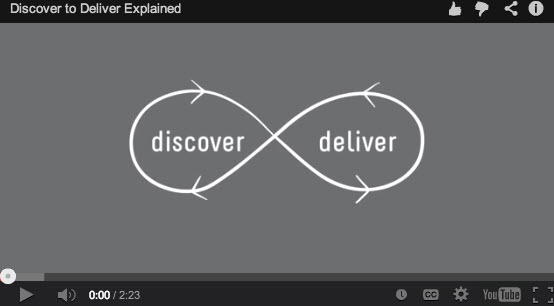5 Ways to Recognize a Great Product Manager
 If you’ve been a product manager for a few years, you already know what I’m about to say. Product management is a hard job. The most successful product managers share these traits:
If you’ve been a product manager for a few years, you already know what I’m about to say. Product management is a hard job. The most successful product managers share these traits:
- They are well versed in their products
- They stay attuned to their customers
- They can lead and communicate a vision equally well with engineering teams and the c-suite crowd
- They have a knack for sifting through and prioritizing multiple (and often competing) wants and needs
If that’s not enough, the best product managers also share a very unique attitude: they are empathic and curious, while balancing a ruthless drive for specificity with a poetic tolerance for ambiguity.
To help make the point that product management is a tough but rewarding job, I wanted to share some factors to look for in a great product manager.
Continue reading
 Are you headed to Agile 2014 this year? We are—and we are eager to introduce audiences there to our unique approach to agile requirements.
Are you headed to Agile 2014 this year? We are—and we are eager to introduce audiences there to our unique approach to agile requirements. Last month I presented a webinar to the PMI® (Project Management Institute) Requirements Management Community of Practice: “Do the Right Thing: Adapting Requirements Practices for Agile and Traditional Projects.”
Last month I presented a webinar to the PMI® (Project Management Institute) Requirements Management Community of Practice: “Do the Right Thing: Adapting Requirements Practices for Agile and Traditional Projects.” Whether you are agile or more traditional, your challenge is the same: In order to remain relevant in today’s market, you have to discover and deliver the right thing at the right time. To do this successfully, you need to elicit customer needs and quickly choose from among many competing voices and options to determine what is truly essential and what can wait for a future release. That means selecting the requirements development and management activities that are most effective for your particular situation–whether those practices are in your current toolbox or not.
Whether you are agile or more traditional, your challenge is the same: In order to remain relevant in today’s market, you have to discover and deliver the right thing at the right time. To do this successfully, you need to elicit customer needs and quickly choose from among many competing voices and options to determine what is truly essential and what can wait for a future release. That means selecting the requirements development and management activities that are most effective for your particular situation–whether those practices are in your current toolbox or not. “Fast, easy, free/cheap…” That’s what we heard about publishing an eBook edition of a paper book. After all, people said, how difficult can it be to take a PDF and make it digital? Quite difficult, actually.
“Fast, easy, free/cheap…” That’s what we heard about publishing an eBook edition of a paper book. After all, people said, how difficult can it be to take a PDF and make it digital? Quite difficult, actually. We’re excited to announce the release of “Discover to Deliver Explained.” This two-minute video provides an animated overview of the key concepts in our book
We’re excited to announce the release of “Discover to Deliver Explained.” This two-minute video provides an animated overview of the key concepts in our book 

 As I prepare to deliver my tutorial (“The Essential Product Owner”) and presentation (“Product Roadmaps: Collaborating to Deliver Value”) at Product Management Festival in Zurich later this month, I wanted to share with you an excerpt of an interview with Mary Gorman and me that was recently published on their blog.
As I prepare to deliver my tutorial (“The Essential Product Owner”) and presentation (“Product Roadmaps: Collaborating to Deliver Value”) at Product Management Festival in Zurich later this month, I wanted to share with you an excerpt of an interview with Mary Gorman and me that was recently published on their blog.